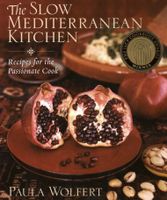🌷 Spring savings – save 25% on ckbk Premium Membership with code SPRING25
Slow Oven-Steamed Salmon
- Serves
8
- Difficulty
Medium
Published 2003
As all good cooks know, the bottom line of fish cookery is do not overcook. The problem is that by the time a fish looks cooked, it may already be too late.
Salmon should be allowed to rest after cooking, the same way meat is allowed to stand to allow the juices to seep back in, but, of course, not for too long. If you’re not careful, residual heat can give you a mushy side of salmon.
I learned the following salmon recipe from Michelin three-star chef
Ingredients
Method
Become a Premium Member to access this recipe
Unlimited, ad-free access to hundreds of the world’s best cookbooks
Over 150,000 recipes with thousands more added every month
Recommended by leading chefs and food writers
Powerful search filters to match your tastes
Create collections and add reviews or private notes to any recipe
Swipe to browse each cookbook from cover-to-cover
Manage your subscription via the My Membership page
Components
- Slow Oven-Steamed Salmon
Part of
Advertisement
Related Recipes
-
-
-
-
Related Reference
-
-
-
-
Advertisement




No reviews for this recipe